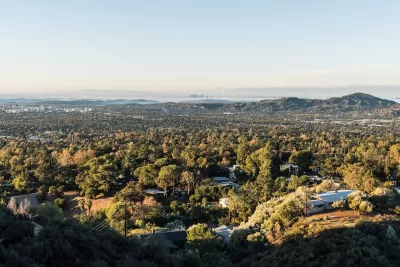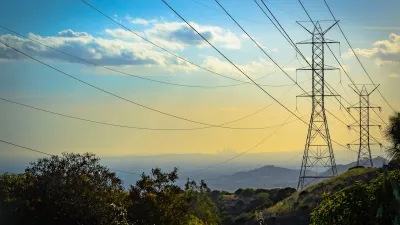The community has higher Black homeownership rates than most of Los Angeles, but now faces an uncertain future as residents struggle to rebuild.

Altadena, the center of one of January’s massively destructive wildfires in the Los Angeles area, was long a bastion of affordable and nondiscriminatory housing for Black families. “In past years, Altadena’s Black residents have had nearly double the homeownership rates of Black Americans across the Los Angeles county area – making the town a potential success story in efforts to shrink the racial wealth gap,” writes Lois Beckett in a piece for The Guardian.
Now, more than half of Altadena’s Black homeowners lost their homes, Beckett reports, putting residents at risk of displacement. According to an analysis by UCLA researchers, 61 percent of Altadena’s Black homes were within the Eaton Fire perimeter, and 48 percent of Black households were destroyed or majorly damaged.
The damage could eliminate decades of generational wealth built up by local families. The UCLA study also notes particular challenges that the Altadena community will face during recovery: more than half of Black homeowners are elderly, making them “especially vulnerable to incomplete or insufficient insurance coverage or predatory financial scams;” roughly 80 percent of Altadena homeowners are still paying off mortgages — on now-destroyed homes. Advocates are pressing for a 12-to-18-month mortgage deferment and a property tax freeze for affected families.
FULL STORY: California fires destroyed or damaged nearly half of Black homes in Altadena

Planetizen Federal Action Tracker
A weekly monitor of how Trump’s orders and actions are impacting planners and planning in America.

Maui's Vacation Rental Debate Turns Ugly
Verbal attacks, misinformation campaigns and fistfights plague a high-stakes debate to convert thousands of vacation rentals into long-term housing.

San Francisco Suspends Traffic Calming Amidst Record Deaths
Citing “a challenging fiscal landscape,” the city will cease the program on the heels of 42 traffic deaths, including 24 pedestrians.

Defunct Pittsburgh Power Plant to Become Residential Tower
A decommissioned steam heat plant will be redeveloped into almost 100 affordable housing units.

Trump Prompts Restructuring of Transportation Research Board in “Unprecedented Overreach”
The TRB has eliminated more than half of its committees including those focused on climate, equity, and cities.

Amtrak Rolls Out New Orleans to Alabama “Mardi Gras” Train
The new service will operate morning and evening departures between Mobile and New Orleans.
Urban Design for Planners 1: Software Tools
This six-course series explores essential urban design concepts using open source software and equips planners with the tools they need to participate fully in the urban design process.
Planning for Universal Design
Learn the tools for implementing Universal Design in planning regulations.
Heyer Gruel & Associates PA
JM Goldson LLC
Custer County Colorado
City of Camden Redevelopment Agency
City of Astoria
Transportation Research & Education Center (TREC) at Portland State University
Jefferson Parish Government
Camden Redevelopment Agency
City of Claremont





























